
Gelechioidea is the superfamily of moths that contains the case-bearers, twirler moths, and relatives, also simply called curved-horn moths or gelechioid moths. It is a large and poorly understood '"micromoth" superfamily, constituting one of the basal lineages of the Ditrysia.
Acanthophila is a moth genus. It is here placed in subfamily Dichomeridinae of family Gelechiidae, although it is sometimes treated as junior synonym of Dichomeris.
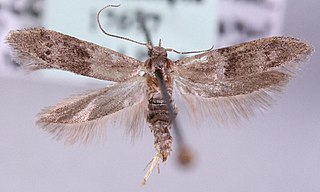
Hypatopa is a genus of moths in the family Blastobasidae.
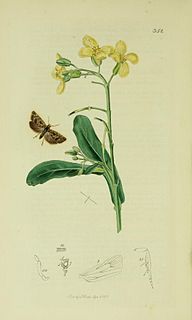
Selania is a genus of moths belonging to the subfamily Olethreutinae of the family Tortricidae.

Micropterigoidea is the superfamily of "mandibulate archaic moths", all placed in the single family Micropterigidae, containing currently about twenty living genera. They are considered the most primitive extant lineage of lepidoptera. The name comes from the Greek for mikros, little and pterux, a wing. The fossil record of the group goes back to the Middle-Late Jurassic with the earliest known species being Auliepterix from the Karabastau Formation in Kazakhstan.
Hypatopa fio is a moth in the family Blastobasidae. It is found in Costa Rica, especially in western Cordillera de Guanacaste.
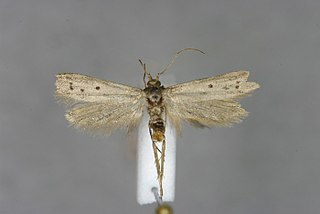
Hypatopa binotella, the spotted dowd moth, is a moth in the family Blastobasidae. It is found in most of mainland Europe, except the Iberian Peninsula and most of the Balkan Peninsula. It was first recorded from Great Britain in 2006 where it is probably accidentally imported.
Hypatopa inunctella is a moth in the family Blastobasidae. It is found in most of Europe.

Hypatopa segnella is a moth in the family Blastobasidae. It is found in Norway, Finland, Germany, Poland, Austria, Slovakia, the Czech Republic, Bosnia and Herzegovina, Ukraine and Russia. It has also been recorded from Switzerland. It has also been recorded from North America, but these records were later treated as misidentifications.
Hypatopa crescentella is a moth in the family Blastobasidae. It is found in North America, including Utah.
Hypatopa fluxella is a moth in the family Blastobasidae. It is found in the United States, including Texas, Louisiana and Maine.
Hypatopa illibella is a moth in the family Blastobasidae. It is found in the United States, including Maryland.
Hypatopa messelinella is a moth in the family Blastobasidae. It is found in the United States, including Florida and Maryland.
Hypatopa morrisoni is a moth in the family Blastobasidae. It is found in the United States, including Arizona.
Hypatopa punctiferella is a moth in the family Blastobasidae. It is found in the United States, including Maryland, Pennsylvania, Kentucky, Texas and California, Florida and Ohio.
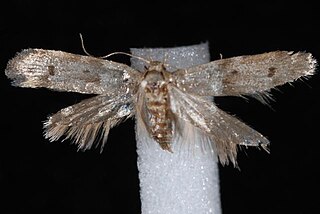
Hypatopa simplicella is a moth in the family Blastobasidae. It is found in North America, including Iowa, Pennsylvania, Ontario, Nova Scotia, British Columbia, Quebec, Maine and Oklahoma.
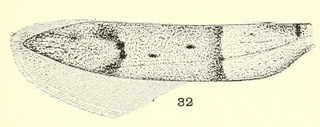
Hypatopa spretella is a moth in the family Blastobasidae. It is found in the United States, including Arizona and Florida.
Hypatopa montivaga is a moth in the family Blastobasidae. It was described by Hiroshi Inoue et al. in 1982. It is found in Japan.
Hypatopa moriutiella is a moth in the family Blastobasidae. It was described by Sinev in 1986. It is found in Russia.
Metantithyra silvestrella is a moth in the family Xyloryctidae, and the only species in the genus Metantithyra. The species and genus were both described by Pierre Viette in 1957 and are found on La Réunion.






